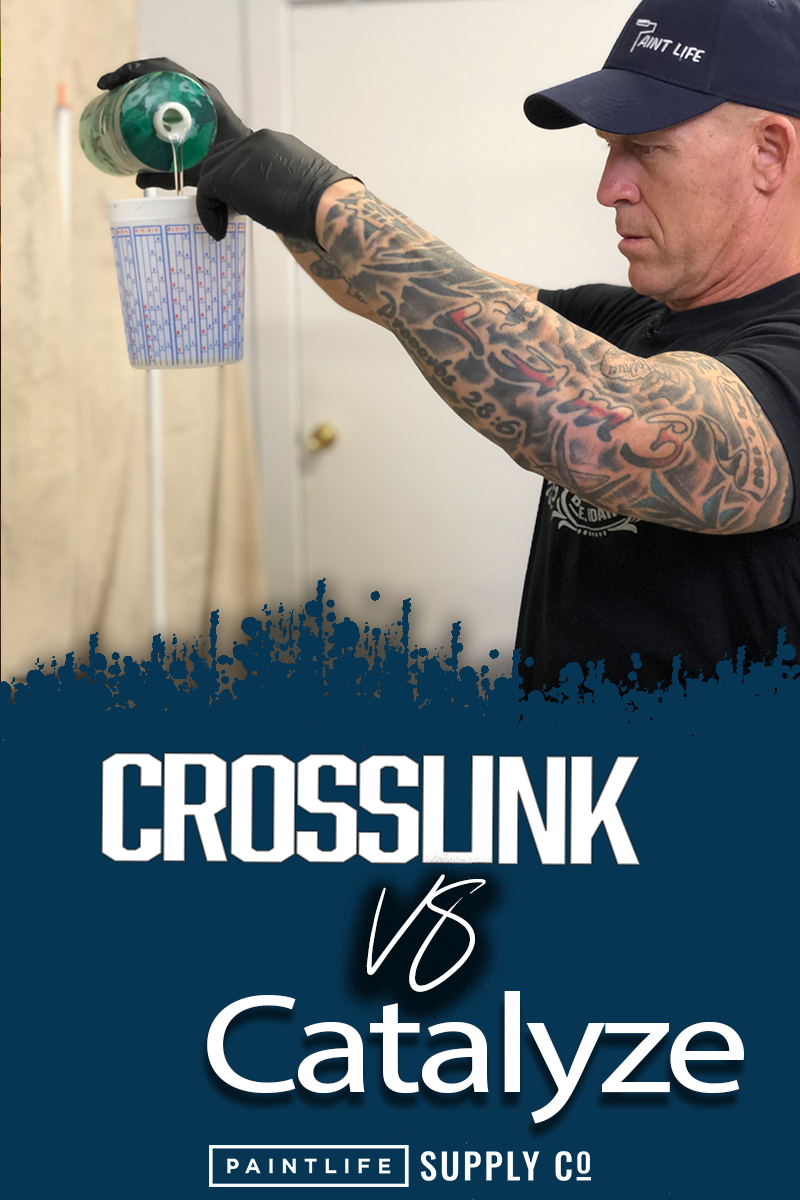
Crosslinking vs Catalyzing
Crosslink vs Catalyze
Lately I’ve been seeing some confusion surrounding catalysts and crosslinkers, what they do, and whether they are different. I understand where this confusion lies, as their marketing displays them both as a means of improving your coatings. However, the difference is considerable and could help save you hassle and money.
The short answer is that catalysts will produce much stronger advantages to a crosslinker but with more risks. To go into more depth, a catalyst (also referred to as a hardener) is a premium product that will cause chemical reactions within your product to harden the surface as well as a number of other advantages. Many catalysts, will also provide an increased water resistance, chemical resistance, bonding strength, scratch resistance, mare resistance, and stop tannin bleed. A catalyst will also give your product a soft buttery feel and decrease dry and cure time.
Things to consider when catalyzing: You have to make sure that your coating is compatible with the catalyst of your choice and make sure your environment using these chemicals is safe. Many catalysts contain a chemical called isocyanate which will release toxic fumes in high concentrations and must be used very carefully.
Long exposure to isocyanate can cause occupational asthma and in extreme cases more lung problems and even cardiac arrest. It is also important to note that when you are catalyzing a product, the catalyst will add a “Pot Life” to the product limiting the time that you can use it as it will harden right in the bucket. To avoid clogging or ruining your sprayer you need to pay close attention to the pot life of a catalyzed product. Exceeding the pot life will completely ruin a sprayer.
With everything said about catalyzers, it may seem clear that they are the superior product and you may be wondering, should I ever use a crosslinker? And that answer comes out to a complicated maybe. Crosslinkers are going to typically be a little less expensive while also receiving less physical benefit to your coating. The main benefit to a crosslinker is added chemical resistance and hardness. Some crosslinkers may add flexibility . That being said, they will still be very effective for coating areas that won’t have much risk of water damage, tannin bleed, and or physical traffic.
The use of crosslinkers is much more friendly to painters that are inexperienced with catalyzers as they have no limiting pot life, and if a product is not completely used when crosslinked it can still be used later by adding more fresh paint/coating to the mix and re-crosslinking. A crosslinker is also safer to use generally as it does not contain isocyanate. With most crosslinkers a chemical is used called polyaziridine which is less toxic and won’t release dangerous fumes.
With all that said I prefer to catalyze my coatings for all cabinets and furniture that I paint. I have used several products over the last few years with excellent results. One that comes to mind is Renner 851. This is a 1 or 2K product that works incredibly well for cabinet refinishers. Renner products can be purchased online from waterbasefinishes.com
Come visit us in person at Paint Life Supply Co. or shop our online store at https://paintlifesupply.com we are a store For Painters by Painters.

3 comments
Chris, your question about the 851 vs the 765 is mostly simple. The 765 is super hang, most used for vertical spraying or if you need to spray high mills in one coat. Very good sag resistance. That’s the main use for it in my opinion.
Hi I’ve been using 851 for a while now but I’m seeing more and more folks using the 765 super hang. Have you used this and do you happen to know if there are any benefits vs 851?
Currently using Canadian made aerosols claiming to be pre catalized……….in a spray can? I think not. Am I right?